Bike Touring Colombia – Pasto to Ecuador border via Circunvalar a Galeras
I’m standing outside of the store, watching the bike, while Janet is inside buying bread. The usual crowd of guys has gathered around me asking the usual questions: “Can each person pedal the tandem separately?,” “Who steers the bicycle?” I didn’t detect a bad vibe, but I did feel a little something in the back of my head. Perhaps I had subconsciously taken note of the bars on all the windows, or perhaps I had noticed men also walking behind me – maybe eying me differently than usual. The feeling was subtle. Suddenly, while I was talking to crowd that had increased to about thirteen guys, Janet tapped me on the shoulder. She had just returned from buying chocolate. Something in her face made me ask, “what’s wrong?” She said in English, “This place is dangerous.” Suddenly, all of the subtle cues I had been taking in flooded down upon me when she said those words.
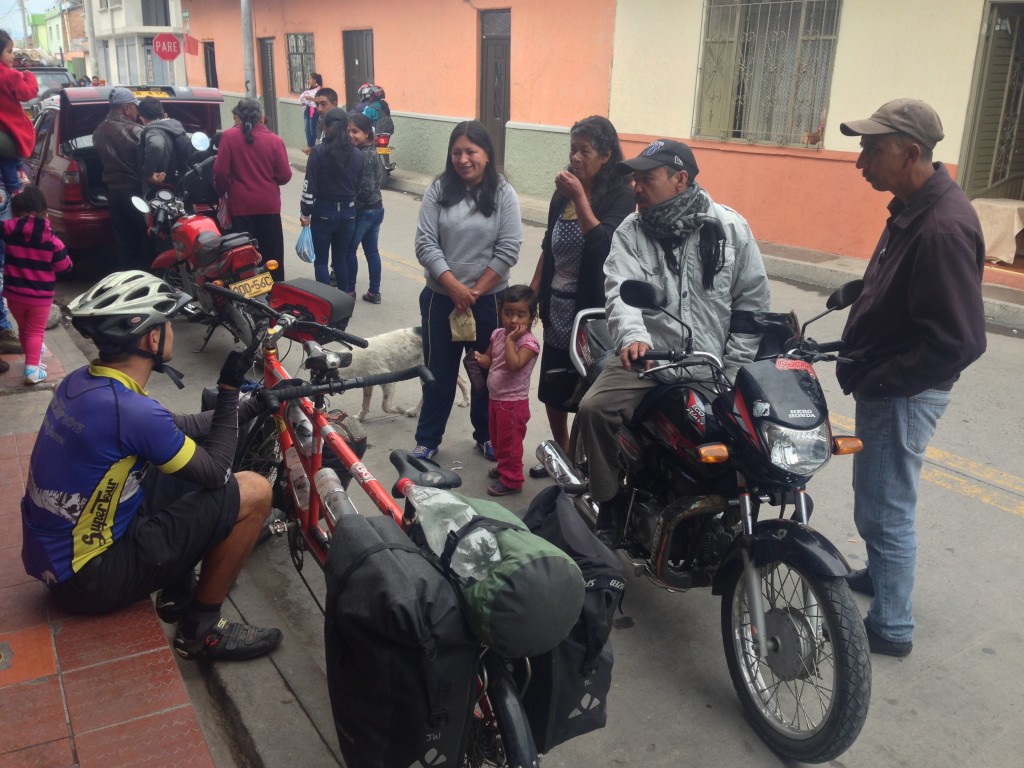
The tandem bike always draws a crowd. The most common question here is if both people need to pedal. Usually, a careful examination of the mechanics of a bicycle-for-two ensues. Eventually, a leader “gets it” and helps me explain how it works to the crowd. Once they have exhausted tandem questions, we get to ask them questions about aspects of Colombia that we have questions about. We usually end up learning the most about Colombia from these small gatherings.
Immediately, another guy approached, kind of parting the crowd. He asked (in English, which is extremely rare in Colombia) if we needed help. Meanwhile, Janet had started telling me a story about how the lady selling her bread had briefly locked her inside the building due to thieves lurking outside. The lady hesitated to give her change until certain people had walked away. Not knowing who to trust, I said, “We don’t need help” to the guy speaking English and offering us assistance. He told us his name was Carlos. Carlos then started telling us about how he himself had biked to Argentina. Eventually, he managed to pull us from the crowd, and immediately but quietly told us that this place is dangerous. We better be careful. I asked him, “thieves, or worse?” He made a knifing motion (carefully looking around to make sure that others hadn’t noticed). I made up my mind: “Let’s get out of here!”
Most people we talk to believe this: Colombia has a reputation for being a dangerous country. In fact, Colombia’s reputation seems to span the globe. Every foreigner we talked to was aware of this notoriety. Every local we talked to said that it is extremely difficult for them to secure a visa to visit ANY outside country because of Colombia’s history with drugs and violence. In spite of this reputation, for the most part, our experience in Colombia was the opposite… the extreme opposite.
In our Central American travels, we had become very accustomed to receiving safety warnings from locals. Even in “tourist friendly” countries such as Costa Rica, we received numerous warnings about certain locales. Granted, these places were away from the tourist track, but the frequency of warnings we received goes to show that you cannot judge an entire country by its individual parts. Everywhere we went in Colombia (up until we reached Pasto), people told us that it was safe. In fact, no one even volunteered safety information until we asked. The topic of safety seemed to be of so little importance that it wasn’t really even considered worth discussing.
It is important for me to convey this information, because after having bike toured in 36 countries, Colombia has without a doubt been the greatest touring experience I’ve had to date – and I’d like to share that with my readers. The largest contributing factors are: The friendless/politeness of the people, the ease of finding a place to stay (even the smallest towns have hotels), the remarkably high concentration of varied destinations/attractions, and the relatively low cost – partly due to the exchange rate.
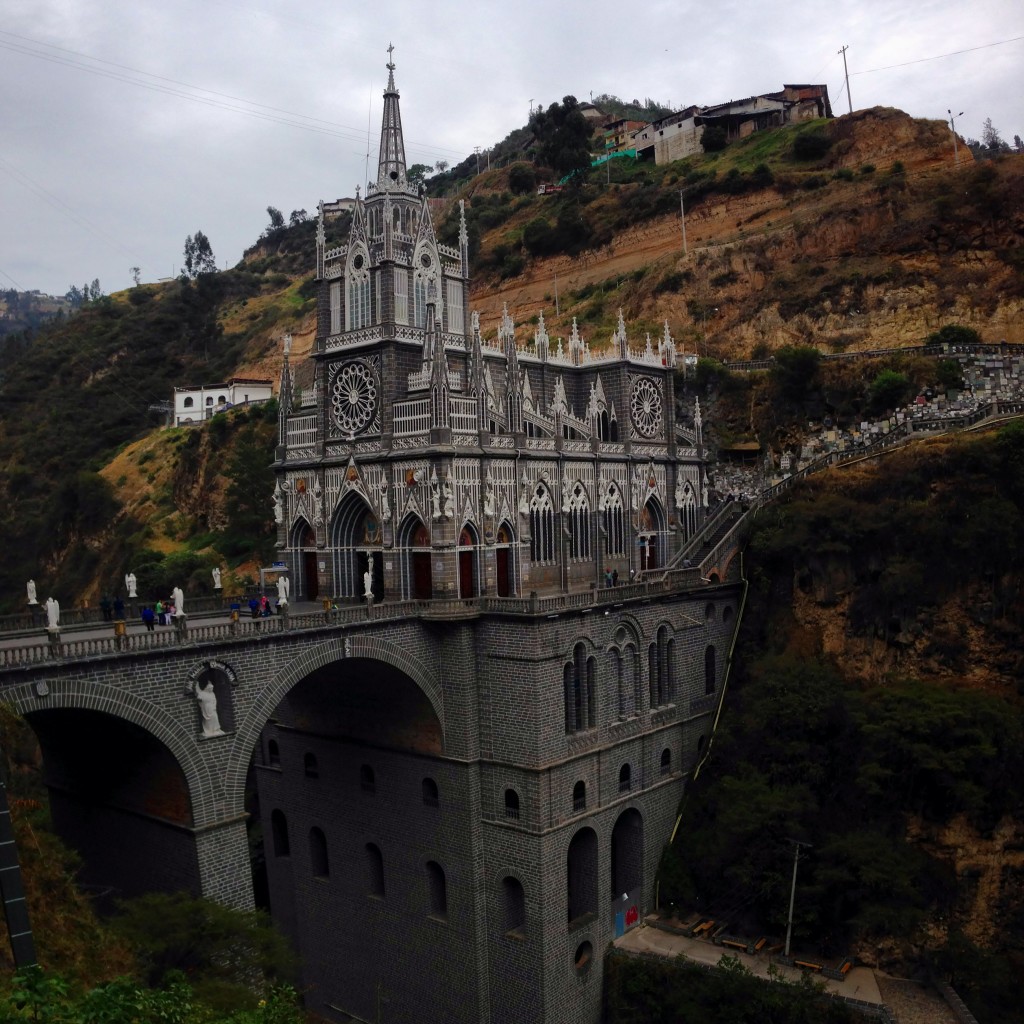
This is Las Lajas, a popular pilgrimage site, where Mary appeared to a young girl when she and her mother were crossing this very deep canyon. It is an appropriate way to finish our visit to Colombia, as we are pilgrims of sorts. I leave Colombia for Ecuador with a heavy heart. Colombia has easily been my favorite country to visit of all time. Bike touring is difficult, so it’s not always 100% super-happy-fun-times. I remarked to Janet the other day, though, how 99% of this trip has been fun – super fun. I don’t know how long Colombia will stay this way, but for the time being, it’s simply amazing.
Nevertheless, upon reaching Pasto, the safety situation seemed to have changed. Pasto is relatively close to the border with Ecuador, so it may be suffering from some of the typical “border town” problems. One thing we noticed in Nariño (Pasto is the capital of the Nariño department) is that there were gasoline shortages. The signs outside said, “No gasoline due to lack of quota.” Locals told us that there were a number of things going on: Ecuadoreans were coming and buying up all the gas (because gasoline is cheaper and better quality in Colombia). Also, we were told that people have been buying gas here and selling it for a profit farther North. Indeed, we noticed that gasoline prices here were quite a bit lower than we had seen in the rest of Colombia. Finally, one local told us that the Southern part of Colombia was the last to receive gas shipments. Regardless of the reason, Janet and I were still surprised to see people driving on the road when gas stations everywhere had already been shut down for 5 days! Whenever there is a shortage of a necessity, I tend to worry about things like riots… but apparently this situation has been going on for several years. At the end of every month, the gas runs out, and the people just deal with it.
Another thing we noticed was the acronym “FARC” spray painted on the exterior walls of homes on our way to Laguna Cumbal. FARC is the Revolutionary Armed Forces of Colombia, and it is a guerrilla movement with a history of violent acts and terrorism. They seem to make the news every day, with various agreements being made with the government. This was the only region where there seemed to be any evidence of their activity, and I asked a local, “Why don’t people just paint over the graffiti that says, ‘FARC?'” He told me, “If they did, they might have problems.” So, pretty much every home we passed near Cumbal had this acronym graffitied out front.
Everyone we met in the city of Pasto had a friendly warning for us. In fact, a teenager approached me and asked, “Were you the guy I saw by the bridge using your cell phone?” Indeed, it was me, so I said, “yes.” He said, “People don’t take their cell phones out in public here because there is the risk of being robbed. Please be careful.” His genuine smile and polite way of addressing me left me with such mixed feelings. Everyone was warning us in such friendly ways – about these unseen miscreants that must be swarming the city. So, although we took much more caution in Pasto and Ipiales (both cities in Nariño), we still feel that there are many sites worth visiting in the Nariño department if you have the time!
Route Information
Circunvalar a Galeras
The Circunvalar a Galeras is a superb bike touring route, and an alternative to the busy Pan American highway. If you loved Colombia so much that you want to spend a little extra time here, this is your ticket. The volcano itself is closed, but that hasn’t stopped at least one or two people from going to the top. (Here is a rather entertaining report by two people who tried this). We did try to ride as close as legally possible – but for you, we suggest skipping the volcano and just doing the circumnavigation.
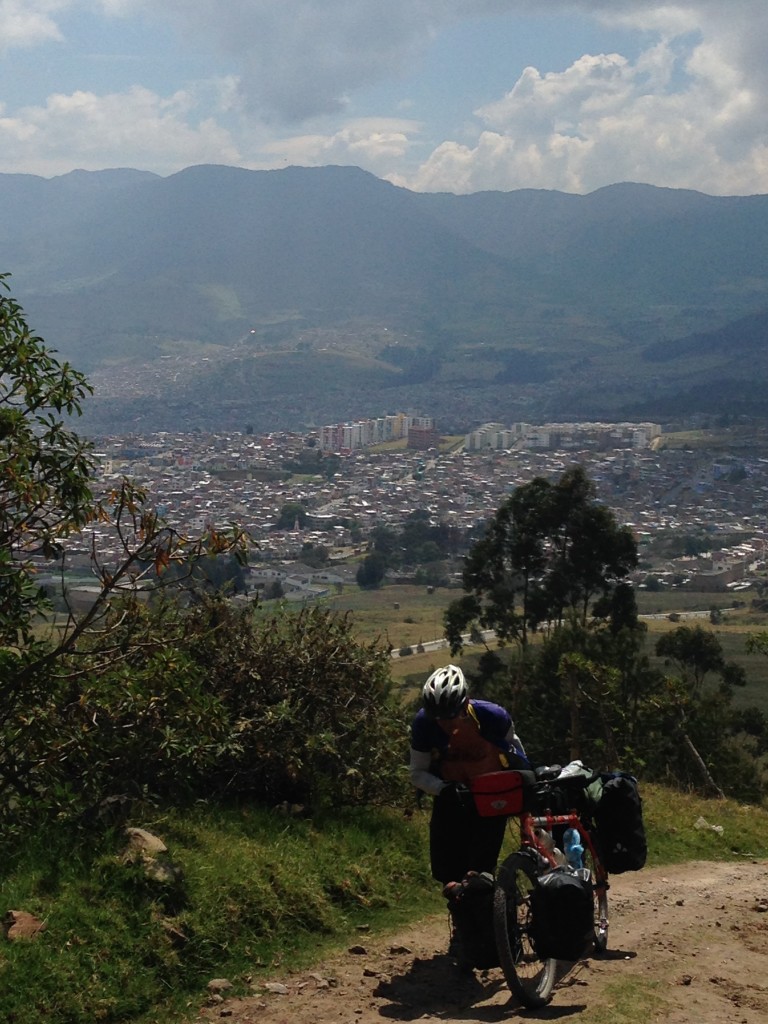
Volcan Galeras is officially closed due to unsafe volcanic activity. They have even placed land mines near the top to keep people out (i.e. safe) from the volcano! Nevertheless, you’re allowed to ascend to a vigilance point before you must turn around. Here is me pushing towards that point; it’s probably not worth it unless you really love climbing!
If you want to do the route, you can either follow the map provided below, our you can follow our textual description: Pasto > Villa Maria > Genoy > Nariño > La Florida > Sandoná > Consacá > Yacuanquer. We noted that each of these towns has at least one basic place for lodging. Sandoná is particularly well-spaced in terms of timing. If you stay there, we recommend selecting a hotel in the center (instead of the lower quality hotel we stayed at on the periphery).
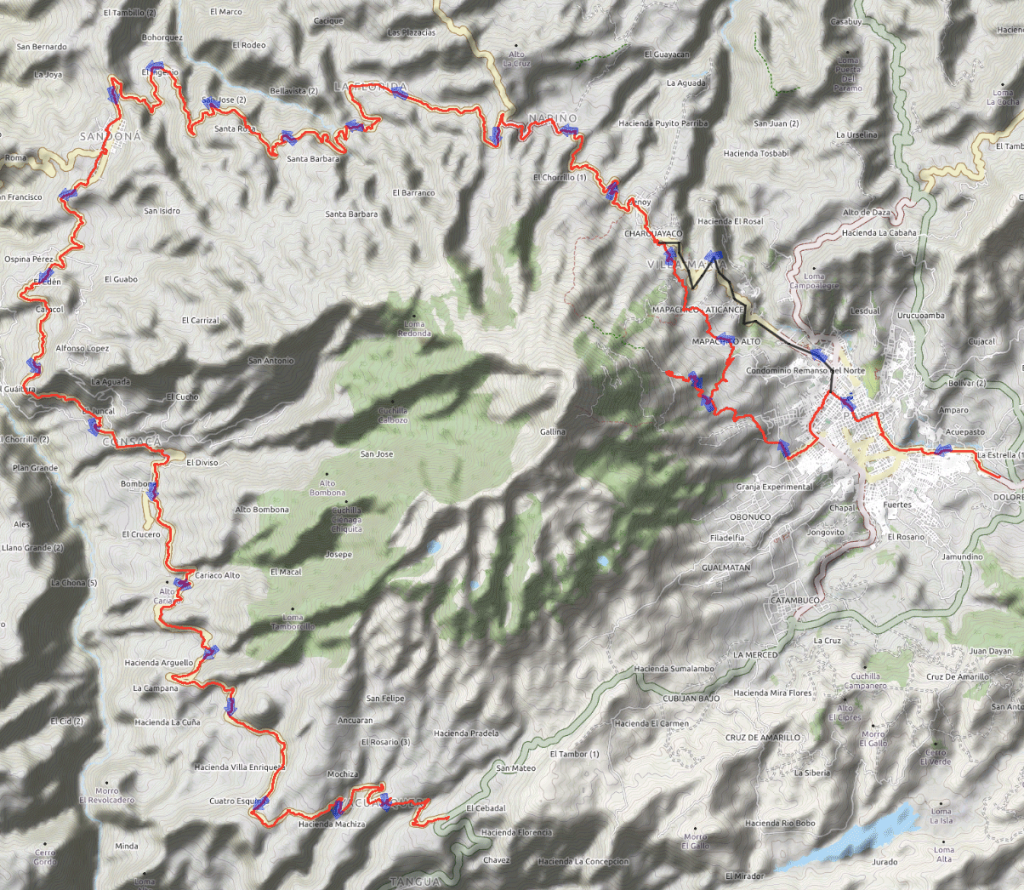
Here is a map of the “Circunvalar a Galeras.” The route in red is the route that we took. Our recommendation for you is to take the black route that I drew in instead. Our intent had been to get as close to the top of the volcano as possible. This route was very difficult on a loaded touring bike, and due to some changes in property ownership, resulted in us taking narrow trails behind peoples’ houses. The remainder of the red route is fantastic. It is mostly paved, however the South-West portion (after Sandona) was all unpaved at the time of this writing.
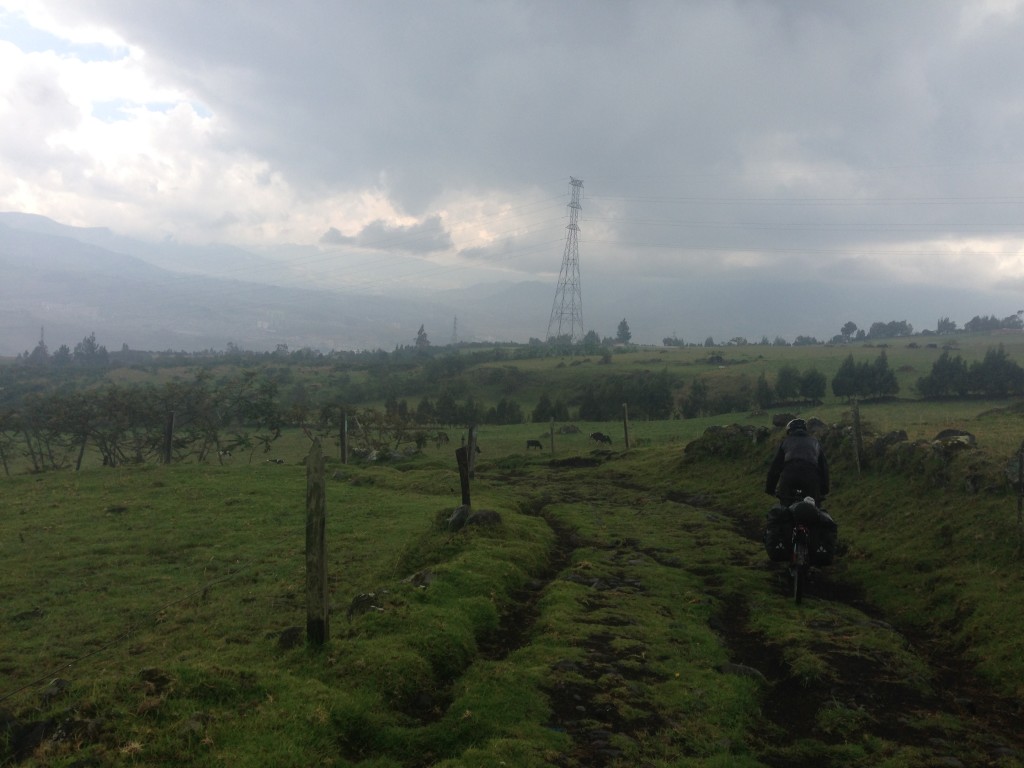
The descent on the non-recommended portion of our route – returning from an attempt to go as far as legally allowed up the mountain.
The route that we recommend (see map above) is paved from Pasto to Sandona. From Sandona, for the next 5 miles South, the route is unpaved. The remainder of the route is now paved, making this one of the longest, quietest paved sections we did in the mountains of Colombia.
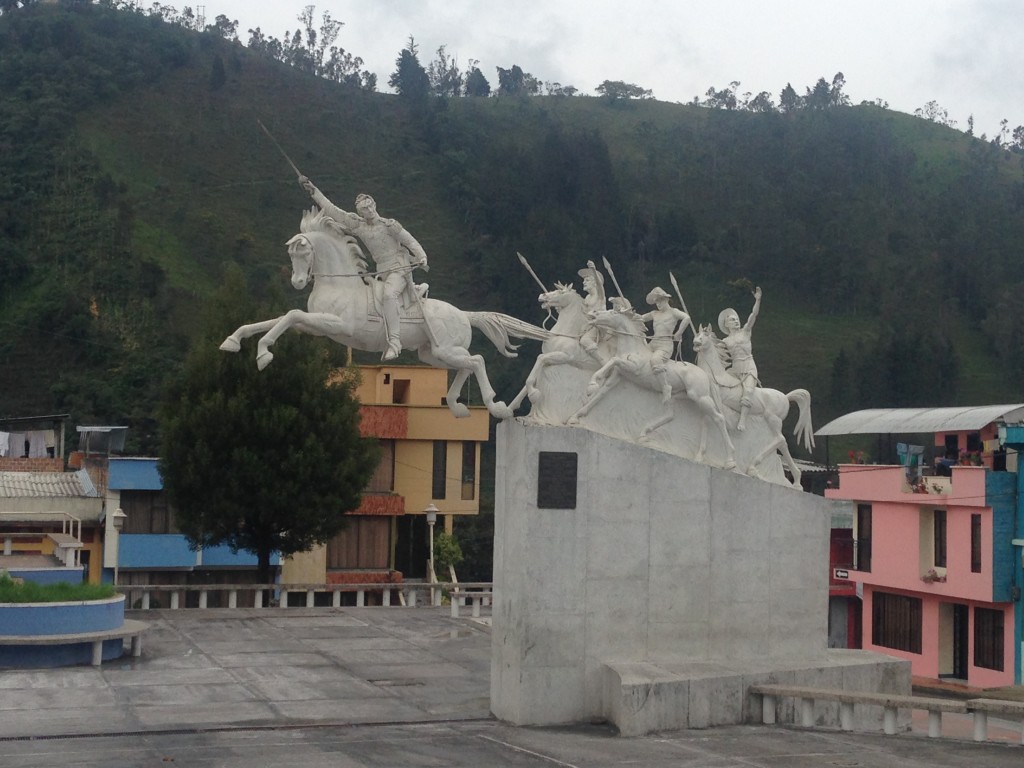
The town square at La Florida. There were many small villages along the route around Galeras. Most seemed to have basic accommodations as well. Sometimes you have to ask around. For example, Yacuanquer had one hotel, but it was un-signed, and above a butcher shop.
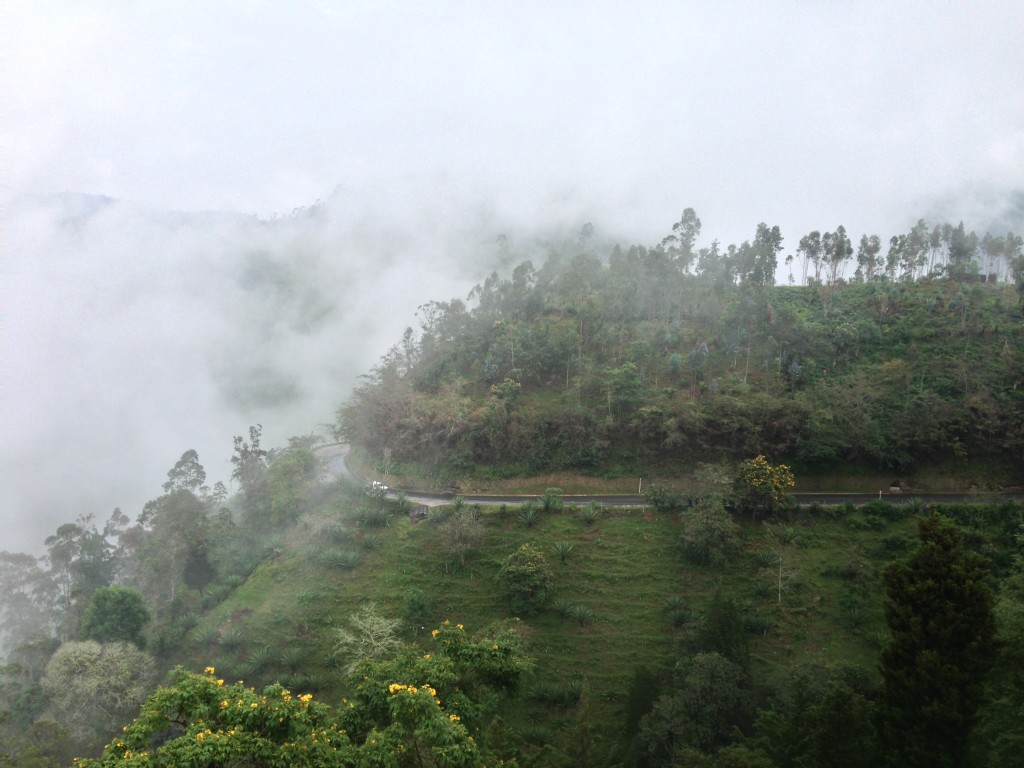
The Circunvalar de Galeras is an alternative way to enjoy the volcano (as opposed to climbing it directly). Basically, you circumnavigate its base. This was a very enjoyable portion of the trip! You come to several small villages along the way, so it is quite easy to find food and lodging. The riding is exceptional, and the views are often great.
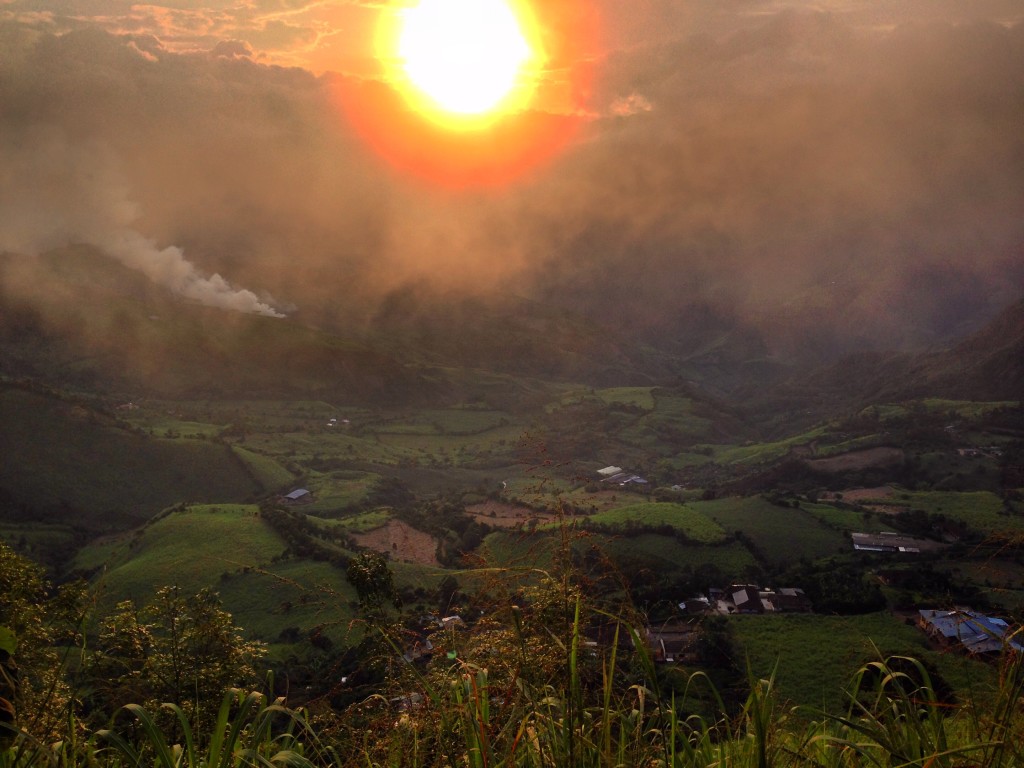
The sun was setting as we came upon Sandona. Like many of the small towns along this route, the views were beautiful. We highly recommend this loop if you’re looking for a quiet, mostly paved, steep but rolling route.
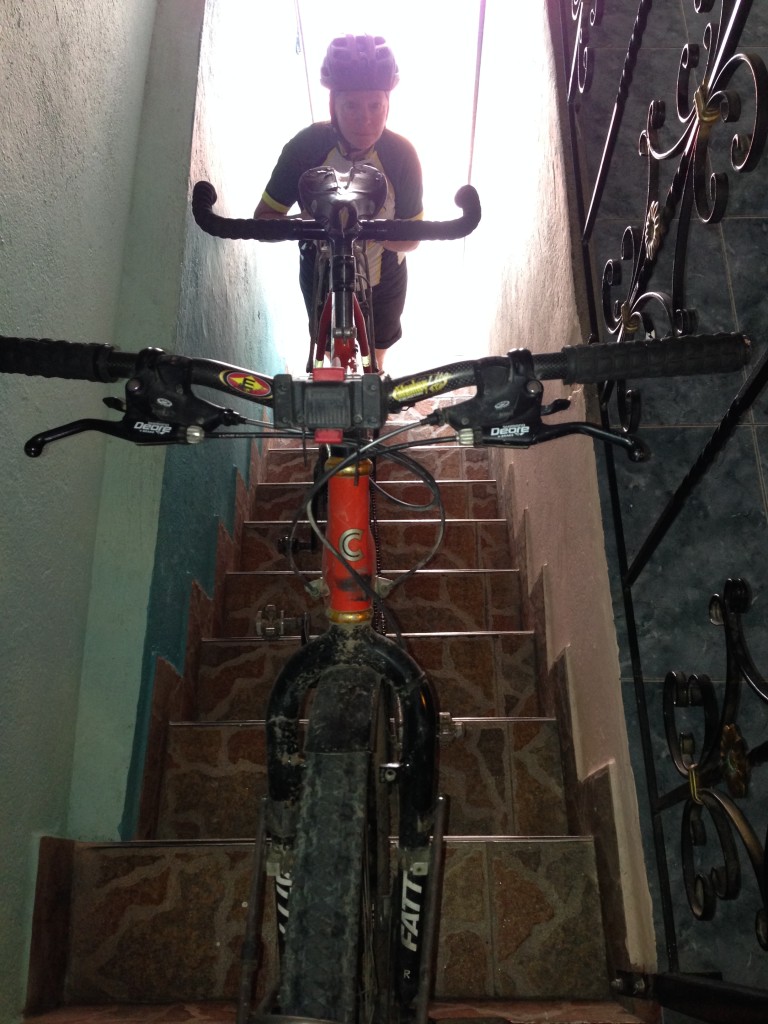
Nearly every hotel in Latin America is upstairs with a narrow hallway. We often find ourselves negotiating the bike through spaces that are hard to simply fit your own body through.
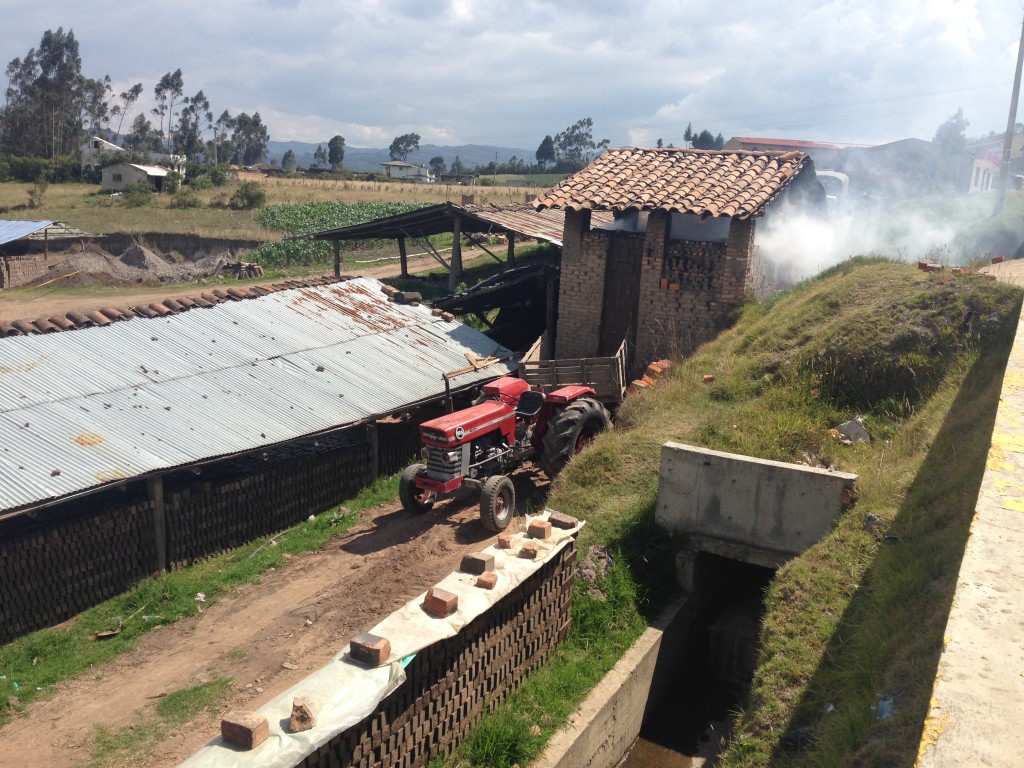
This area of Southern Colombia seems to be pretty popular for brick making. Janet and I noticed that the kilns for heating the bricks were also made of brick. This led us to ask ourselves, “What came first, the brick or the brick kiln?”
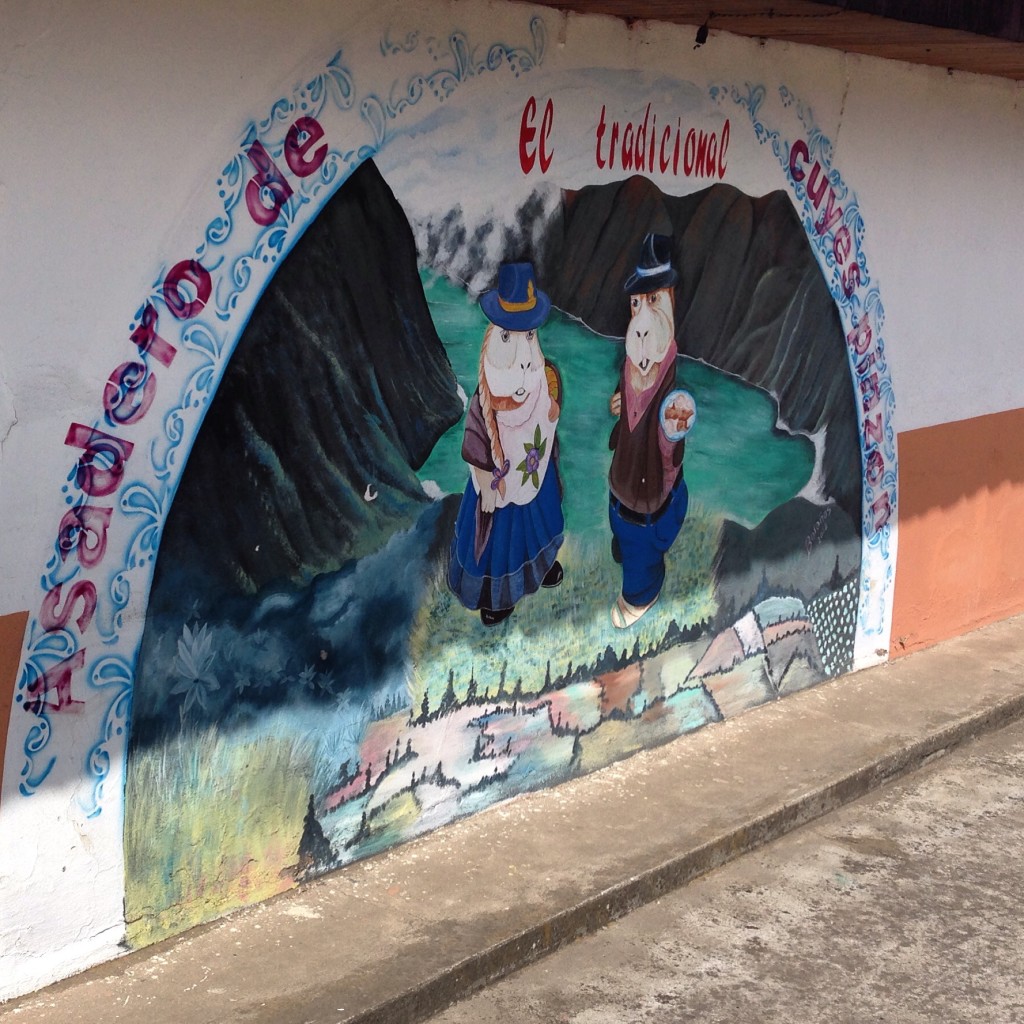
Guess what they serve here? Cuy – Guinea Pig. Once you forget the stigma that you might be eating someone’s pet, the taste is very good. In fact, given the choice, I’d easily prefer it over chicken!
Volcan Azufral
Volcan Azufral is absolutely worth a trip if you’re in the area. We staged out of the town named Túquerres. The trip to the crater is an out-and back, so it made sense to leave our touring gear in town at the hotel, and ride up unladen. If you have a mountain bike, it is possible to ride all the way to the rim of the crater. To get down into the lake (which you will definitely want to do), you have to walk.
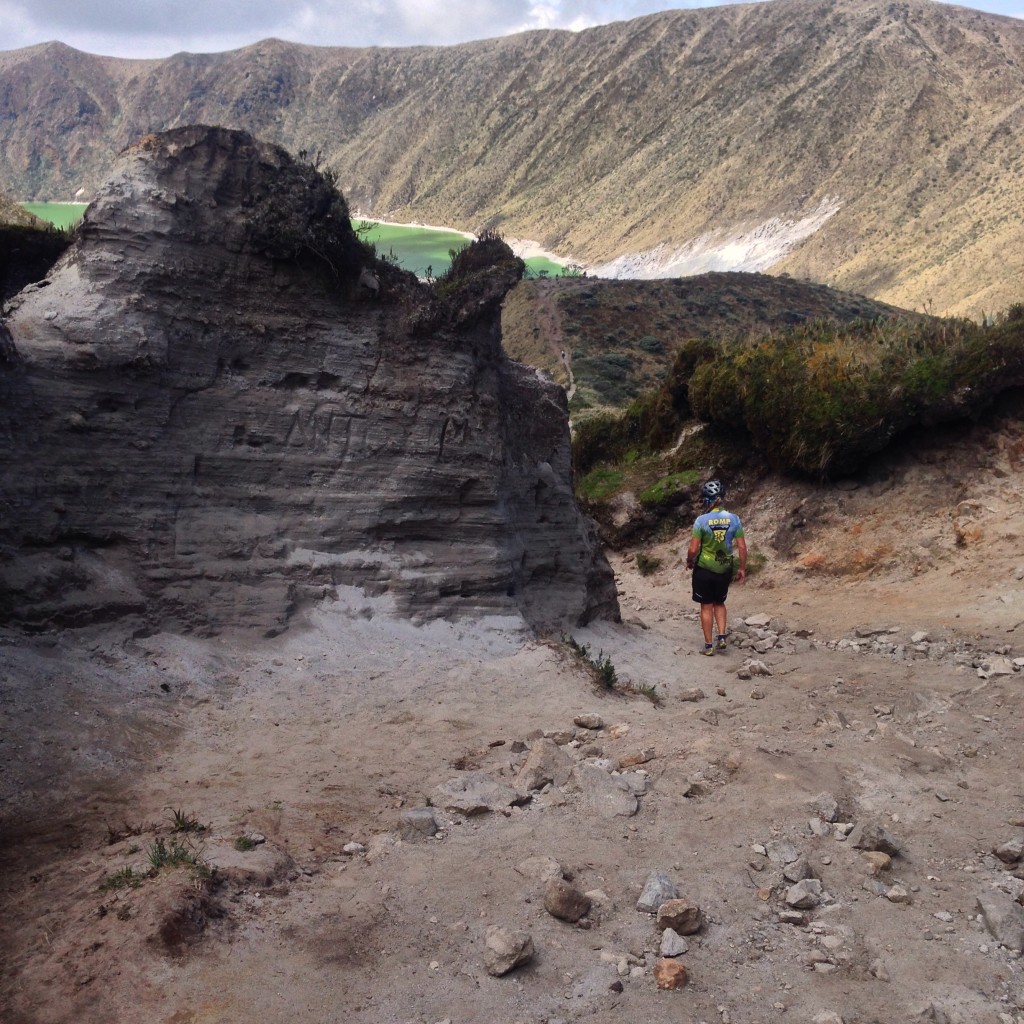
Janet descending into the crater of Volcan Azufral. We stationed ourselves in Tuquerres for a day trip to the top. I feel it was very much worth it!
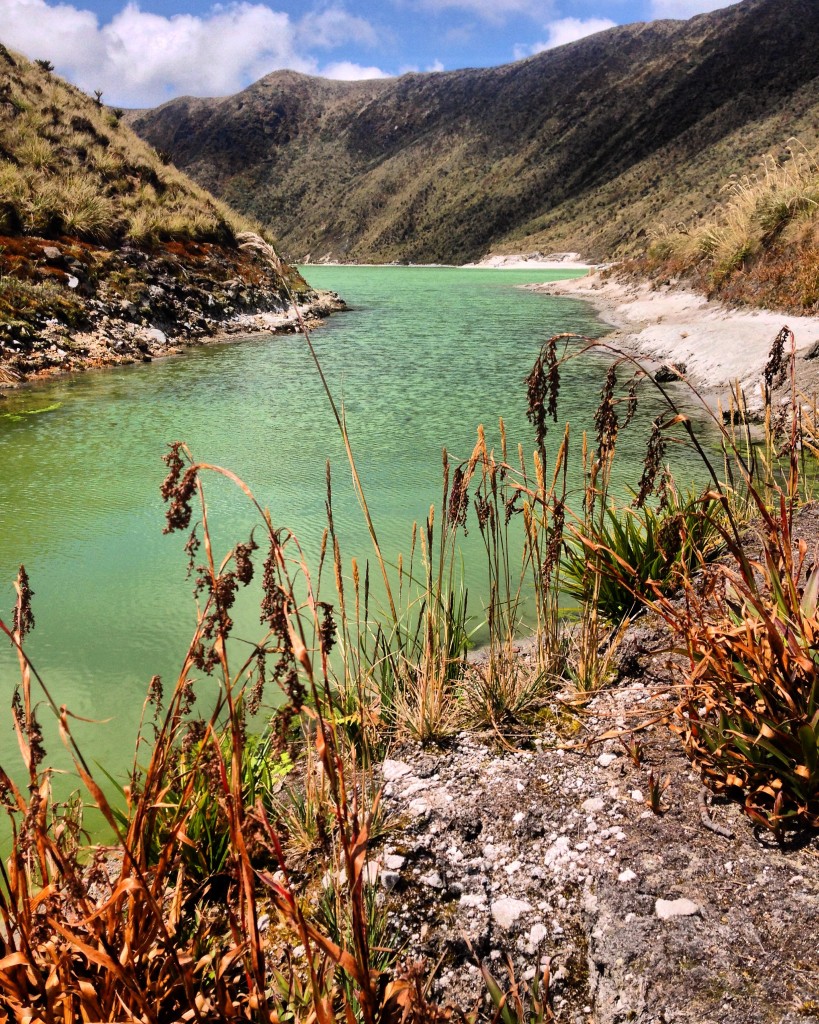
Laguna Verde in the crater of the volcano. It is bubbling like soup everywhere. It is cold water in some spots, but I found some pools that were so hot, they’d burn your hand in 2 seconds.
There is a station near the top where you must register that you are entering. There is no cost to enter; you just need to provide your name and passport number.
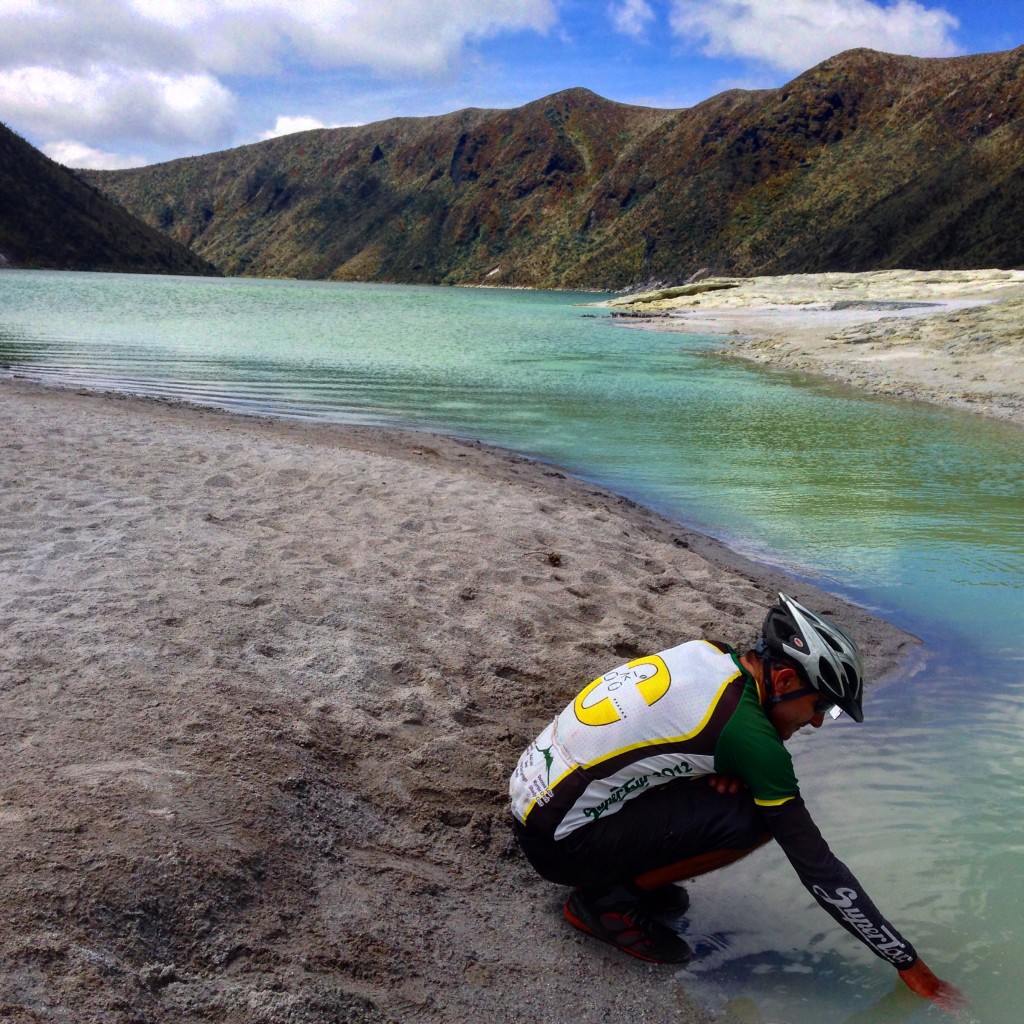
Me testing the beautiful waters. This water here is cold. A hundred feet behind me, however, you can put your hand in boiling hot water.
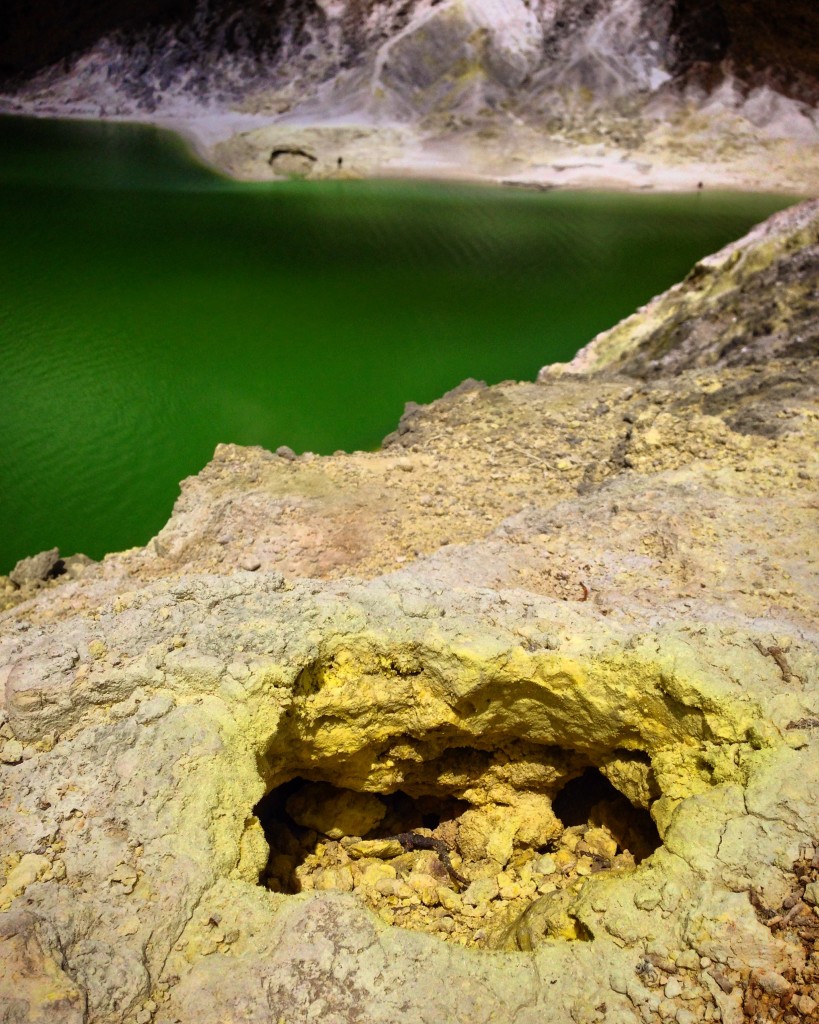
A steam vent – don’t get too close to these! My leg got burned just walking by! This area was the most interesting to me, as there were a number of multi-colored vents. To find this zone: After you get to the bottom of the (obvious) crater trail, ascend a small, rugged hill to your left. You may have to step over some water, and the going is rough for the first hundred feet. You will also notice a small solar powered monitoring station that keeps track of the volcanic activity for safety concerns.
Laguna de Cumbal
If you’re riding a mountain bike, and you have the time, riding your bike to Laguna de Cumbal can be a fun excursion. Though I wouldn’t necessarily consider it to be a must-do, Cumbal is the most active volcano in Colombia. Therefore, if you’re interested in seeing a smoking plume, this could be your best chance. Also, you are allowed to climb the volcano (though we didn’t, so I don’t have any information to help you with that).
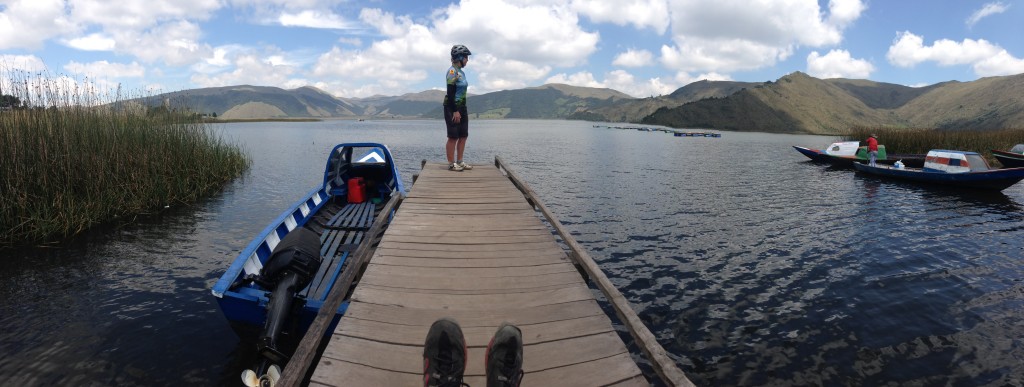
When you get to Lago Cumbal, you do have the option to rent one of these boats ($3 US) and go out onto the lake for even better views. This location was very quiet when we arrived.
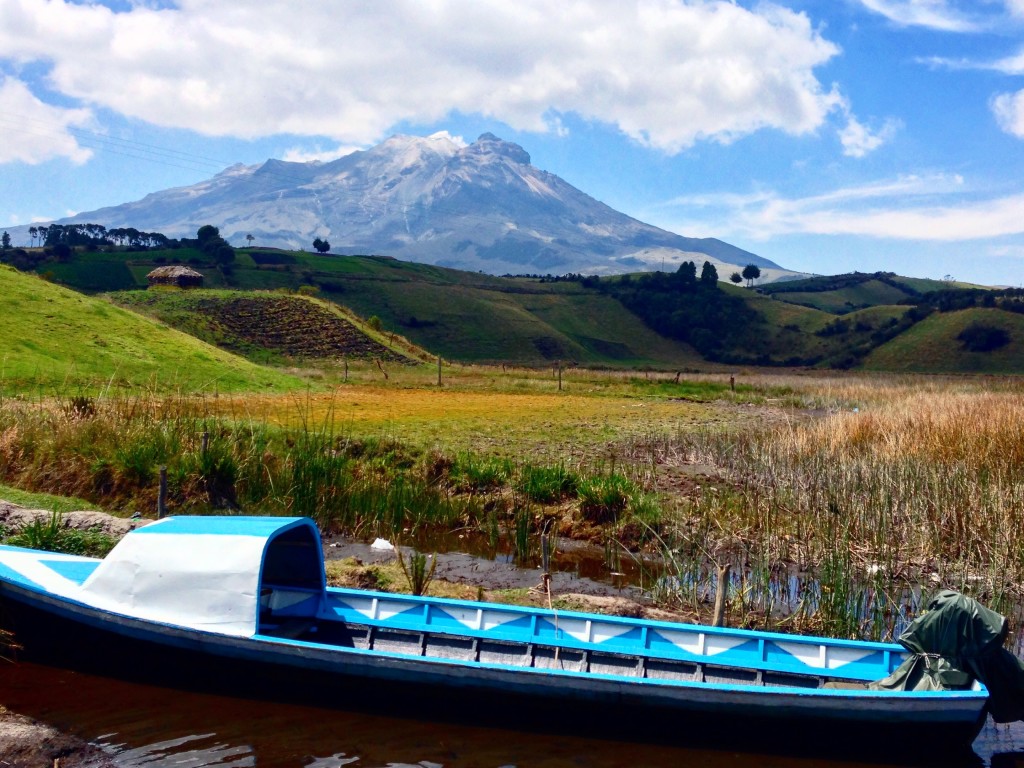
This is Volcan Cumbal – the most active volcano in Colombia. Surprisingly, you’re permitted to climb the 4764m peak. We recommend following our route to Lago Cumbal for great views of this volcano. It’s a little extra work, but worth it if you have time.
The ride out to Lago de Cumbal is completely unpaved from the town of Cumbal.
As with the rest of our rides, you can use the interactive map below for finding your own route. Note that the dates on the map are click-able, linking you to a more detailed map and elevation profile on Strava.
This is the map for the entire route discussed in this post. To Export GPX files, click on the three horizontal bars in the upper right hand corner of the map and select Export selected map data…
To see this map in a full screen, click here (opens in new window)












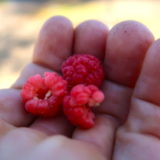
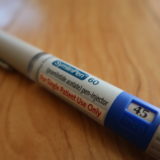

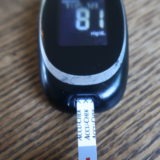
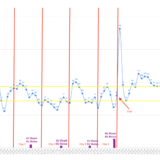

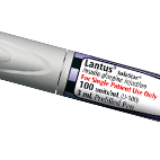
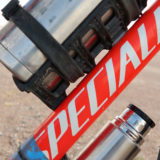

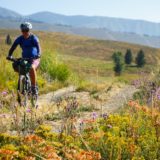
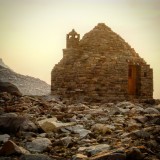
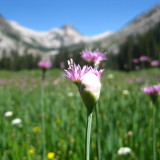
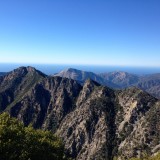
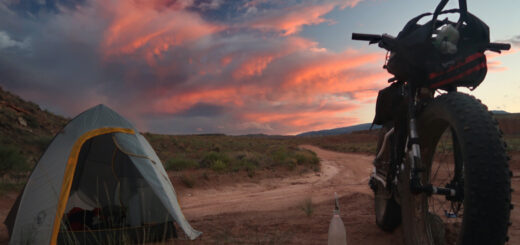
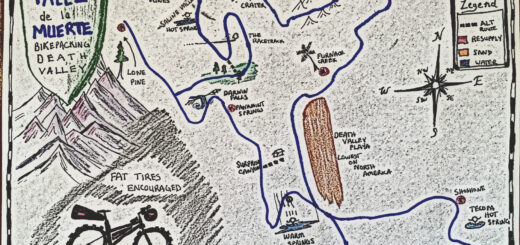
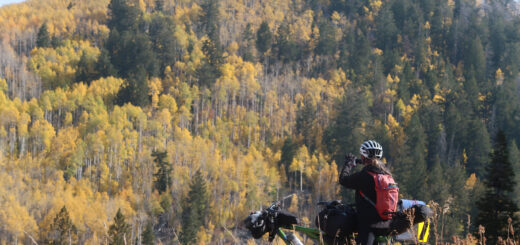
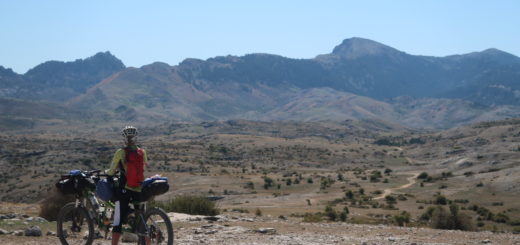
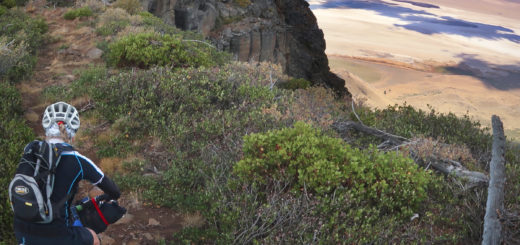
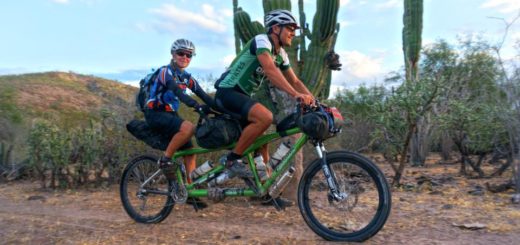
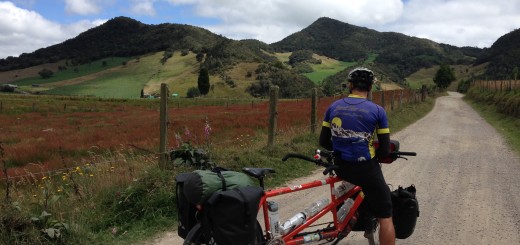
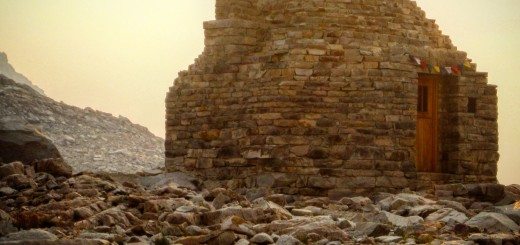
Hi, I’m Diego and I’m from Pasto. Thank you for showing my city and his gratness to the world.
I would like to clarify some things in your post. Cumbal volcano isn’t the most active volcano in Colombia, in fact ihis activity in very poor compare to other volcanos in Colombia (Galeras volcano, for example). Nowadays there’s a travel agency (Sueño de los Andes on facebook) offering tours to the top of Cumbal volcano, leaving from Pasto o Ipiales. It’s cheap, the tour cost 20 dollars, more or less.
About Galeras volcano, I have been on the top, but it is not permited because its high activity. Maybe you can search for someone that can guide you to the top, but it’s your responsibility if any accident happen.
Note for someone who want to visit Laguna Verde on Azufral volcano. At the day, the entry to this place is not permmited, because the indigean tribe livind in the zone is taking care the place of people don’t have respect for nature.
Finally, Nariño is not that dangerous on the zone you biked, if you go to the cost part of the deparment IT IS DANGEROUS, so I don’t recommend it.
Hello! I am curious if you know of any places in Colombia where we could rent a full cross country bike touring set up? Thanks!